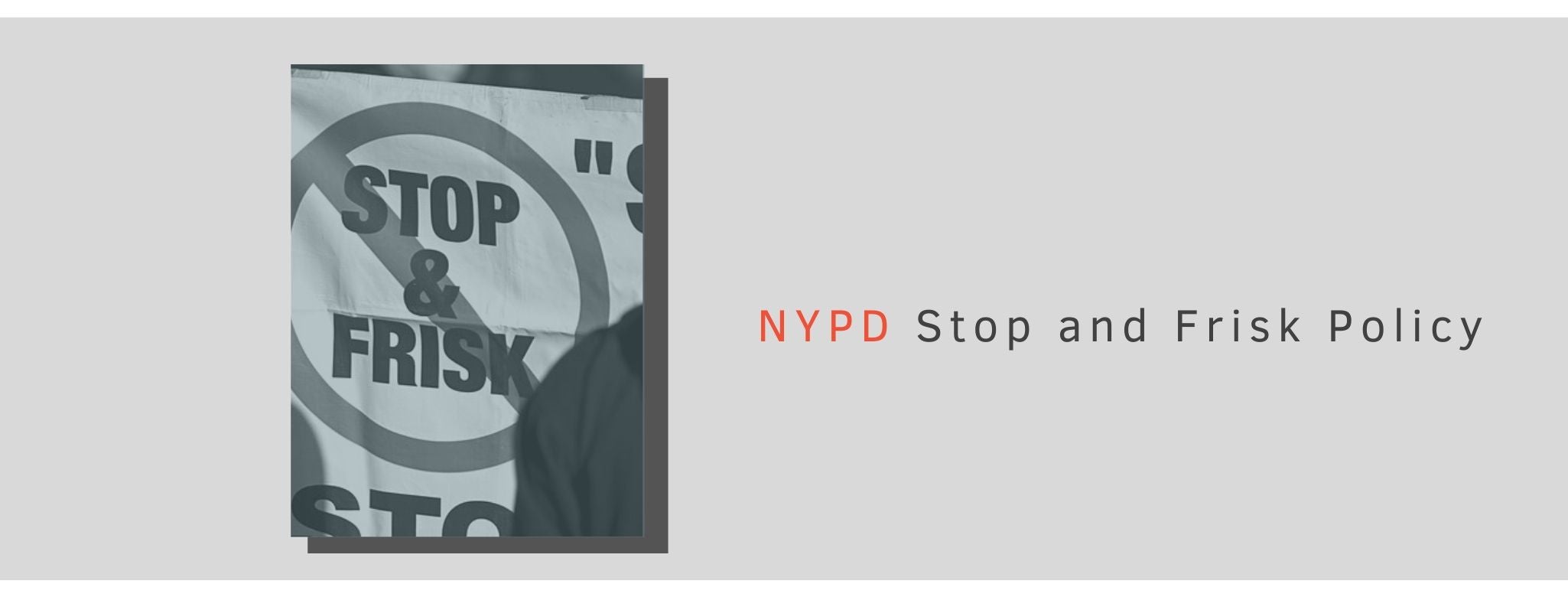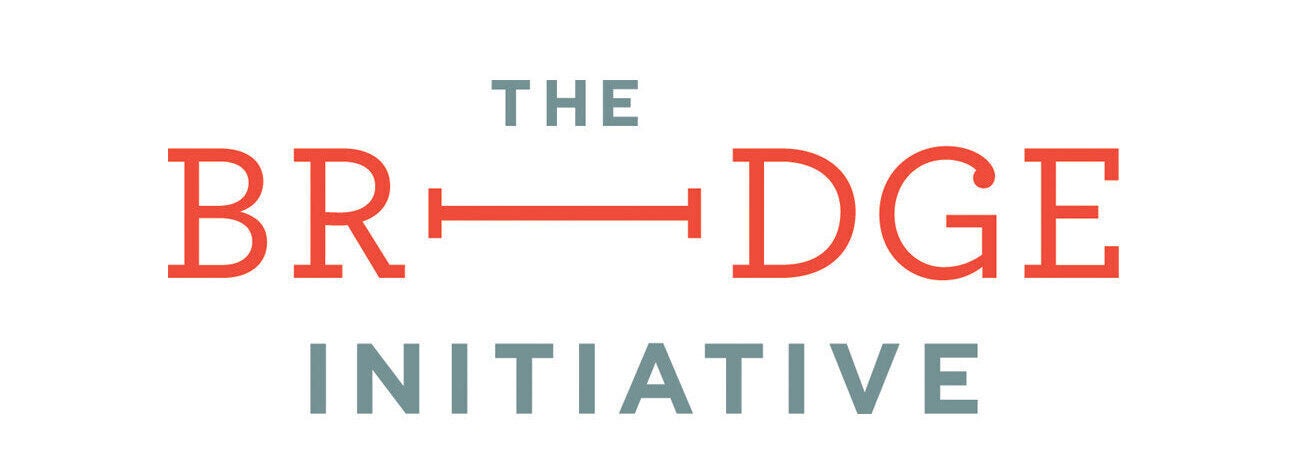
Factsheet: NYPD STOP AND FRISK POLICY
IMPACT: Stop and frisk is a policing tactic of temporarily detaining, questioning, and frisking individuals in search of weapons or contraband. The New York Police Department’s (NYPD) use of the tactic under Mayor Rudy Giuliani (1994–2001) and Mayor Michael Bloomberg (2002–2013) disproportionately impacted Black and Latino communities, faced accusations of racial profiling, and contributed to an environment of fear amongst the targeted communities. In 2011, at the height of the program, over 685,000 people were stopped, with nearly 88% found to be innocent. The NYPD’s application of stop and frisk was found unconstitutional in 2013 due to a policy of indirect racial profiling. The practice of stop and frisk has continued across the country in varied forms.
Stop and frisk is a policing practice “of temporarily detaining people on the street, questioning them, and possibly also frisking or searching them.” The practice was employed by the New York Police Department (NYPD) and reached its height under the tenure of Mayor Michael Bloomberg (2002–2013). In 2011, at the height of the policy, an estimated 685,724 people were stopped by the NYPD, and “some 88 [percent] of the total was found to be innocent.” The NYPD’s practice of stop-and-frisk was found unconstitutional in 2013, and began to sharply decline under current Mayor Bill de Blasio, although it is still practiced.
The legal precedent for stop-and-frisk was determined in a 1968 Supreme Court case titled Terry v. Ohio (1968). Terry set a national standard that “allows police officers to interrogate and frisk suspicious individuals without probable cause for an arrest, providing that the officer can articulate a reasonable basis for the stop and frisk.” The court also held that “frisking someone is legally permitted only when the officer has a reason to suspect that the person is armed and/or dangerous.”
In New York City, stop and frisk gained momentum under Rudy Giuliani, who served as mayor of New York City from 1994 to 2001. Giuliani adopted a “zero-tolerance” policy for low-level offenses, in hopes of detaining individuals who had committed more serious crimes. The policy was carried out by a unit within the NYPD called the Street Crimes Unit (SCU), “squads of elite undercover officers that were sent into high-crime sections of the city.” According to the U.S. Commission for Civil Rights, the SCU filed “27,061 stop and frisk reports” in 1998, which was “the greatest number generated by any NYPD unit.” In April 1999, the subjects of all stop and frisk reports registered by the SCU were “64.5 percent black, 20.7 percent Hispanic, 6.3 percent white, and .5 percent Asian.”
In October 2000, a federal investigation of the SCU “determined that its officers engaged in racial profiling in recent years as they conducted their aggressive campaign of street searches across the city.” The investigation of the unit was prompted by the February 1999 killing of Amadou Diallo, a 23-year old Guinean immigrant who was shot at 41 times by SCU officers in front of his apartment building. In April 2002, after facing accusations of racial bias, Police Commissioner Raymond W. Kelly announced the unit’s detectives would be redeployed, in effect closing the SCU.
The aggressive policing tactics of the SCU and Giuliani’s emphasis on his zero-tolerance policy laid the framework for stop and frisk under Bloomberg. According to a 2014 NAACP report, along with Police Commissioner Raymond Kelly, Bloomberg “increased the quotas of stop, question, and frisks, falsely believing it would help reduce violence in targeted high-crime neighborhoods.” During his tenure as mayor, “NYPD officers recorded 5,081,689 stops” and between 2003 and 2013, “there were nearly 4.4 million stops of innocent people.”
Data from the NYCLU and other organizations revealed that Black and Latino individuals were disproportionately stopped, frisked, and subjected to physical force. According to the Equal Justice Initiative, “About 83 percent of the stops between 2004 and 2012 involved black and Latino people, even though those two groups comprise slightly more than half of the city’s residents.” In 2011, according to the Prison Policy Initiative, “the police stopped Black and Latino people 574,483 times and used physical force against them almost 130,000 times.” Physical force entailed pointing firearms, using batons or pepper spray, and pushing subjects against the wall, car, or ground.
Data also revealed that young New Yorkers constituted a significant portion of stops. Between 2003 and 2013, “black and Latino males between the ages of 14 and 24 accounted for 41 percent of stops.” In its 2013 Coming of Age with Stop and Frisk study, the Vera Institute of Justice found that “44 percent of young people surveyed indicated they had been stopped repeatedly—9 times or more.”
Minorities who lived at the intersection of multiple identities, including Black and Latino, were also harmed by stop and frisk. Homeless individuals, LGBTQ communities, immigrant communities, and Muslim individuals were policed through the policy. According to then-Director of Education and Outreach of the Center for Constitutional Rights (CCR), Annette Dickerson, “LGBT people, young people, poor people, Arab and South Asian people and Muslims are also targets [of stop and frisk] … and it is often at the intersection of communities that the oppression of stop and frisk is most felt.”
Defenders of stop and frisk have argued that the excessive stops of Black and Latino individuals were due to the demographics of crime suspects. In April 2013, Bloomberg dismissed claims that the NYPD disproportionately stopped men of color and stated: “The sad reality is on the streets of our city, 90 percent of murder suspects and murder victims are black and Latino. And black and Hispanics are the overwhelming majority of suspects in other violent crimes.”
In August 2013, a federal judge “heard and rejected the racial version of the NYPD’s argument.” During Floyd, et al. v. City of New York, et al, a federal class-action lawsuit, the CCR “challenge[d] the New York Police Department’s practices of racial profiling and unconstitutional stop and frisks of New York City residents.” Judge Shira A. Scheindlin ruled that the tactic “violated the constitutional rights of minorities in the city” and that the police had “resorted to a ‘policy of indirect racial profiling.’” As part of the ruling, Scheindlin also “emphasized what she called the ‘human toll of unconstitutional stops’ … [and] characterized each stop as ‘a demeaning and humiliating experience.’”
The human toll and mental health impacts stop-and-frisk had on minority communities were further explored in a 2014 study published in the American Journal of Public Health. According to the study, which surveyed 1,261 New Yorkers aged 18-26, “young men stopped by police reported they had elevated anxiety levels and other trauma from the encounters.” According to a 2012 report from CCR titled Stop and Frisk: The Human Impact, individuals who were stopped and frisked also “described feeling a range of emotions during stops, including anger, fear, shame, and vulnerability” and were left “feeling unsafe, fearful of police, afraid to leave their homes, or re-living the experience whenever they see police.”
The report also noted that individuals who were stopped and frisked experienced “inappropriate and abusive behaviors by police, including being forcibly stripped to their underclothes in public, inappropriate touching, physical violence and threats, extortion of sex, sexual harassment and other humiliating and degrading treatment.” In 2012, the New York Times has reported that “stops of women by male officers can often involve an additional element of embarrassment and perhaps sexual intimidation, according to women who provided their accounts of being stopped by the police.”
The NYPD’s enforcement of stop-and-frisk coincided with the NYPD Muslim Surveillance and Mapping Program, and both policies “relie[d] on unconstitutional profiling – one racial, the other religious.” The surveillance program, which began under Bloomberg in 2001, monitored Muslim communities in New York and nearby states until 2014. A covert unit within the program called the Demographics Unit recruited mosque informants, sent undercover officers into Muslim neighborhoods and businesses, and mapped and monitored the daily life of 28 “ancestries of interest.” According to a series of Pulitzer-prize winning articles by the Associated Press (AP), the program “never generated a lead or triggered a terrorism investigation.”
In November 2019, prior to the start of his democratic presidential campaign, Bloomberg issued an apology for his policy of stop and frisk. Speaking at a predominantly Black church in Brooklyn, he stated: “Today I want you to know that I realized back then I was wrong … [and] I didn’t understand that back then, the full impact that stops were having on the black and Latino communities.” During a February 2020 campaign event, Bloomberg further apologized for the practice, stating, “I should have acted sooner and faster to stop it, I didn’t, and for that I apologize.” Prior to his presidential campaign, Bloomberg had defended stop and frisk on numerous occasions.
In October 2013, Giuliani claimed that stop and frisk saved lives and that he turned the NYPD “into a police force that is proactive.” In February 2020, he criticized stop and frisk under Bloomberg and defended his own use of the strategy, claiming, “We were following not race, we were following complaints … [and] the African American community was selecting for us who to go look for.”
In September 2016, then-presidential candidate Donald Trump expressed support for stop and frisk and claimed it “worked incredibly well” in New York. In October 2018, as President of the United States, Trump claimed he instructed the Attorney General’s office “to work with local authorities [in Chicago] … and to strongly consider stop-and-frisk.” He also praised stop and frisk under Giuliani and claimed New York City “went from an unacceptably dangerous city to one of the safest cities in the country.” According to a recent analysis by WalletHub, NYC ranked the 113th safest city in the U.S. out of 182 cities in 2019.
The practice of stop-and-frisk has faced controversy in cities around the U.S. In August 2015, the ACLU of Illinois released a report which revealed that “Black Chicagoans were subjected to 72% of all stops, yet [they] constitute[d] just 32% of the city’s population.” The report also revealed that “Chicagoans were stopped more than four times as often as New Yorkers at the height of New York City’s stop and frisk Practice.” Following the release of the report, the ACLU of Illinois and the Chicago Police Department developed an agreement which called for “increased public disclosure and more officer training.”
In May 2018, then-US Attorney General Jeff Sessions erroneously blamed an ACLU lawsuit for an increase in violence in Chicago and stated: “If you want crime to go up, let the ACLU run the police department.” In October 2018, Sessions further claimed that the agreement between the Chicago Police Department and the ACLU of Illinois which “limited officers’ use of … stop-and-frisk was ‘catastrophic’ and a ‘colossal mistake.’”
In September 2019, the Metropolitan Police Department of Washington, D.C. released its Stop Data Report after a three-year-long series of requests from the ACLU of D.C. The report found that “70 percent of people stopped by its officers were black – despite the fact that Census numbers show there are just about as many white people living in the district.” Philadelphia, Miami Gardens, Boston, and Baltimore have also grappled with controversial stop and frisk policies.
Updated June 1, 2020

 Search
Search